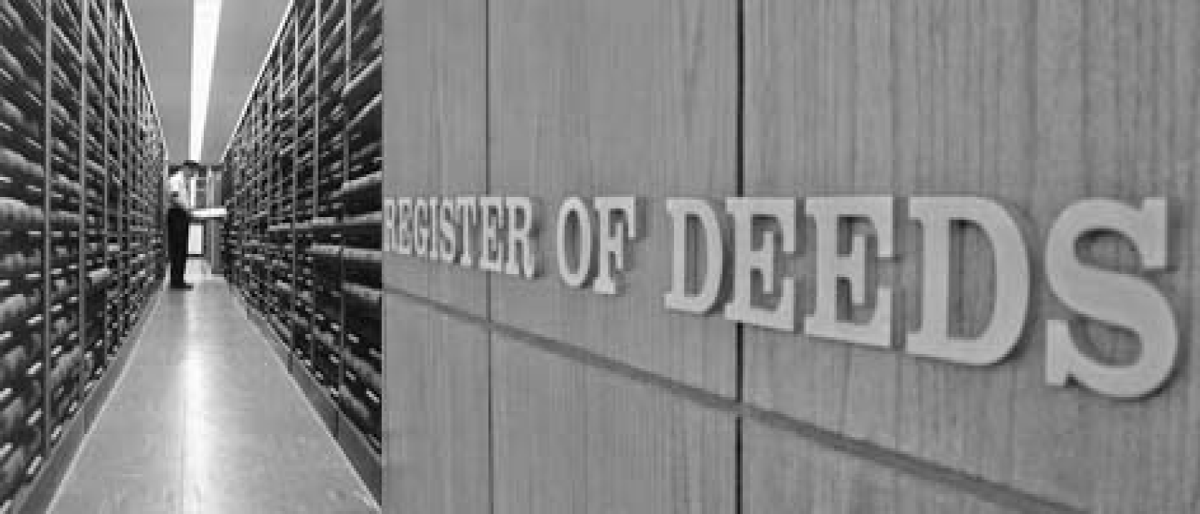
You are NOT on the Dekalb County official website, you are on Deeds.com, a private website that is not affiliated with any government agency.
The County Clerk and Recorder is responsible for maintaining property records in Dekalb County.
Recording Fees
The standard document fee (8.5x11 inches) is $74
A non-standard document (larger than 8.5 x 11 inches) is $94
Certified copies cost the same as the recording fee. Non-certified copies are $1 per page.
The recorder's office accepts cash, checks, and most major credit or debit cards as forms of payment.
County recording fees are subject to change without notice. We recommend to contact the local recorder's office directly to verify this information.
Document Formatting Requirements
A document should consist of one or more individual sheets measuring 8.5x11 inches, not permanently bound or in a continuous form. Graphic displays accompanying a document that measure up to 11x17 inches will be recorded without charging an additional fee. There should not be any attachments stapled or otherwise affixed to any page.
The document should be legibly printed in black or blue ink by hand, type, or computer. Signatures and dates can be in a contrasting color if they reproduce clearly. The font size should be a minimum of 10 point.
Use white paper of not less than 20-pound weight with clean margins of at least an inch on the top, bottom, and sides. Margins can be used for non-essential notations that will not affect the validity of the document, including but not limited to form numbers, page numbers, and customer notations.
The first page should contain a blank space measuring at least 3x5 inches in the upper right-hand corner.
The name and address of the grantee, for tax billing purposes, must be provided on the first page.
Include also the name and address of the person to whom the instrument is to be returned. This should be in the top left-hand corner of the first page, but should not extend into the 3x5 inch blank space.
The name and address of the taxpayer responsible for real property taxes (the grantee) should be listed below the return address information on the first page.
The consideration exchanged for the property should be listed on the first page.
Any instrument submitted for recordation wherein a property description is an essential part of the instrument must contain the legal description of the real property. If there is not enough room on the first page, the legal description can be attached on a separate 8.5x11 inch sheet.
The Permanent Index Number assigned to the property should be listed below the legal description, followed by the property address.
Corresponding names should be typed or printed beneath signatures.
Instruments must contain the recorders document number (and book and page number) of any instrument referred to in the instrument being recorded or filed or relating to the instrument being recorded or filed, such as, without limitation, the recorders document number of a mortgage when recording a release of that mortgage.
A recorder will not record an instrument unless the name and address of the person who prepared and drafted it is printed, typewritten, or stamped at the conclusion of the deed in a legible manner. An instrument is in compliance with this if it contains a statement in substantially the following form:
This instrument was prepared by:
__________________________Name
__________________________Address
REAL ESTATE TRANSFER DECLARATION
All deeds or trust documents must be accompanied by a completed Illinois Department of Revenue Real Estate Transfer Declaration or a Statement of Exemption when they are presented for recording. The declaration is available online at the County Clerk and Recorders webpage and can be submitted as a hard copy or electronically.
The link on the website will allow users to calculate the net taxable consideration subject to transfer tax.
County offices and the Illinois Department of Revenue use this form to collect sales data and to determine if a sale can be used in assessment ratio studies. This information is used to compute equalization factors. Equalization factors are used to help achieve a state-wide uniform valuation of properties based on their fair market value.
The Statement of Exemptions permits document submitters to claim an exemption from the transfer tax for a particular transaction. For an exact list of exemptions, refer to Chapter 35 ILCS, section 200/31-45.
Effect of Recording: All deeds, mortgages and other instruments of writing which are authorized to be recorded, shall take effect and be in force from and after the time of filing the same for record, and not before, as to all creditors and subsequent purchasers, without notice; and all such deeds and title papers shall be adjudged void as to all such creditors and subsequent purchasers, without notice, until the same shall be filed for record.